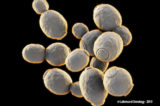UNDER INVESTIGATION NO4
The use of selected wine yeast in dry form dates to the mid-1960’s (Kraus et al, 1983). Gradually, this practice has been one of the most important innovation in winemaking. It allowed winemakers reliability and security during alcoholic fermentation (AF), as well as a tremendous choice of different yeasts, without the concern related to managing a often delicate and difficult spontaneous AF, with all the risk related. Yeast production is a true expertise, one that relies on a strong understanding of yeast metabolism, microbiology and process.
The selected wine yeast used by winemakers must be in optimal shape. In order to obtain optimal state, specific feeding regime during its growth and development, tailored to each specific wine yeast, as they are all different, is learned and optimized by true science and years of experience and research. This Under Investigation will showcase how selected wine yeast production is conducted and why it benefits winemakers.



